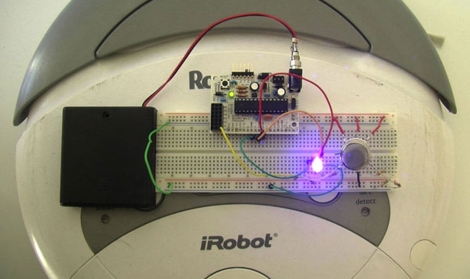
[Larry] and [Carol] just upgraded the coop to make their lives easier, and to help keep the chickens happy. The image above is a chicken’s-eye-view of the newly installed automatic door. It’s a guillotine design that uses the weight of the aluminum plate door to make sure predators can’t get in at night. This is much easier to fabricate than a locking coop door would have been. Some leftover aluminum channel guides the door on either side, with a spool above it to wind up some rope, thereby lifting the door.
You can see the belt-drive motor is also mounted inside, out of the element. To the right of the image you can just make out a plastic food container. This protects the electronics from the elements. Inside you’ll find an H-bridge to drive the motor, a real-time-clock to make sure the schedule is well-timed, and an Arduino. There are a couple of reed switches which let the microcontroller sense the position of the door.
After the break you can see a demonstration video, as well as a slide show with build details. The motor is pretty quiet and, although it spooks the chicken in the demo just a bit, we’d be they’ll be used to it in no time.
Continue reading “Motorized Coop Door Lets The Chickens Out For You”

















